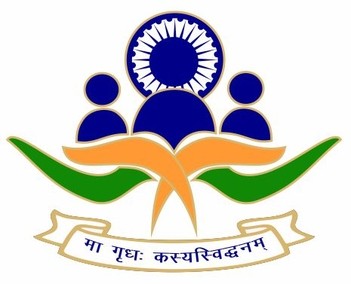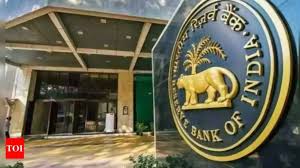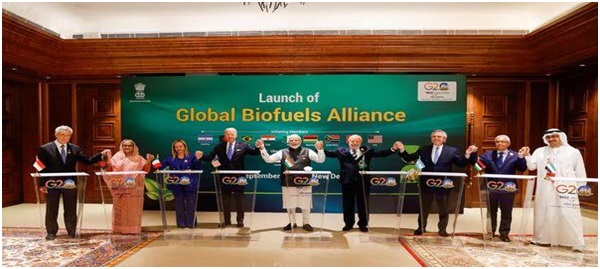Lokpal

- 26 Feb 2025
Context:
In February 2025, the Supreme Court of India stayed a controversial order issued by the Lokpal, which had attempted to bring High Court judges within its jurisdiction by categorizing them as "public servants" under the Lokpal and Lokayuktas Act, 2013. The apex court termed the Lokpal’s interpretation as “very disturbing” and in contradiction with settled constitutional principles.
Understanding the Lokpal and Its Jurisdiction
Origin and Legal Framework:
- Concept Origin: The term "Lokpal" was coined by Dr. L.M. Singhvi in 1963. The concept was originally inspired by the Swedish institution of the Ombudsman (1809).
- Legislative Foundation: The Lokpal and Lokayuktas Act, 2013 was passed following public pressure during the Anna Hazare-led India Against Corruption movement.
- Purpose: To act as an independent anti-corruption body with jurisdiction over high-ranking public officials.
Structure and Jurisdiction:
- Composition:Lokpal comprises a Chairperson and up to 8 members (50% must be judicial).
- Selection Committee: Includes the Prime Minister, Speaker of Lok Sabha, Leader of Opposition, Chief Justice of India, and an eminent jurist.
- Jurisdiction (Section 14):
- Prime Minister (with exceptions related to national security, international relations, etc.)
- Union Ministers and Members of Parliament
- Government servants (Group A-D)
- Chairpersons, officers of public entities, and NGOs receiving foreign contributions over ?10 lakh annually
The Controversy: Inclusion of High Court Judges
The Lokpal recently issued an order stating that High Court judges qualify as public servants under the Lokpal Act. The reasoning was based on historical foundations:
- Lokpal’s Argument:
- High Courts were established under British-era laws like the Indian High Courts Act, 1861.
- Article 214 of the Constitution merely recognizes these courts rather than creating them.
- Therefore, High Court judges should fall under Lokpal’s purview, unlike Supreme Court judges who are appointed under Article 124.
Supreme Court’s Response and Constitutional Position
The Supreme Court overruled Lokpal’s interpretation, citing constitutional provisions and established legal precedent:
- Appointment under the Constitution:
- High Court judges are appointed under Article 217 of the Constitution.
- Supreme Court judges are appointed under Article 124.
- Both are constitutional functionaries and hence outside the jurisdiction of Lokpal, which is a statutory body.
- 1991 K. Veeraswami Judgment (Five-Judge Bench):
- Unanimously held that judges are public servants, but no criminal case can be registered against them without prior consultation with the Chief Justice of India (CJI).
- Even if the CJI is the accused, the consultation must occur with other senior SC judges.
- Emphasized judicial independence and the need for protection against frivolous or motivated inquiries.
- Judicial Integrity vs Public Scrutiny:
- While corruption among judges is not immune to scrutiny, the procedure must ensure judicial independence, prevent erosion of public trust, and protect honest judges from harassment.
Critical Analysis: Lokpal's Overreach and Constitutional Boundaries
- Violation of Doctrine of Separation of Powers:The Lokpal's attempt to extend its reach to constitutional judges infringes on the independence of the judiciary, a basic feature of the Constitution.
- Constitutional Supremacy vs Statutory Authority:The Lokpal, being a creation of Parliament, cannot override the constitutional safeguards provided to judges under Articles 124 and 217.
- Judicial Precedent Binding on Statutory Bodies:Ignoring the K. Veeraswami judgment not only undermines legal precedent but also reflects a lack of institutional discipline.
Conclusion
The recent conflict between the Lokpal and the Supreme Court over jurisdictional boundaries highlights the delicate balance between ensuring accountability and preserving judicial independence. While combating corruption remains vital, procedural safeguards and constitutional norms must guide such actions. The episode reiterates the importance of institutional clarity, inter-agency respect, and adherence to constitutional principles in India's democratic framework.
RBI’s Liquidity Infusion of ?1.5 Lakh Crore

- 04 Feb 2025
In News:
In January 2025, the Reserve Bank of India (RBI) announced its largest monetary easing since the COVID-19 pandemic, unveiling a multi-pronged plan to inject over ?1.5 lakh crore into the money markets.
This move aims to address liquidity shortfalls caused by RBI’s forex interventions and signal possible easing in the upcoming monetary policy review.
Context: Why Liquidity Infusion Was Needed
- Forex Intervention: RBI sold over $50 billion from its foreign exchange reserves to stabilise the rupee, in response to large-scale equity sell-offs by Foreign Institutional Investors (FIIs).
- Impact: These interventions reduced rupee liquidity, tightened short-term interest rates, and raised borrowing costs.
- Liquidity Deficit: Market estimates pegged the shortfall at ?3 lakh crore.
Key Liquidity Measures Announced by RBI
- Government Bond Buy-Back: ?60,000 Crore
- Conducted in three tranches on January 30, February 13, and February 20, 2025.
- Objective: To inject liquidity into the banking system by repurchasing government securities before maturity.
- 56-Day Variable Rate Repo Auction: ?50,000 Crore
- Scheduled for February 7, 2025.
- Enables banks to borrow short-term funds by offering government securities as collateral at a market-determined interest rate.
- USD/INR Buy-Sell Swap Auction: $5 Billion
- A six-month forex swap in which RBI borrows dollars in exchange for rupees and agrees to buy them back later.
- Helps stabilize the rupee without draining rupee liquidity.
Significance of the Measures
- Monetary Transmission: With adequate liquidity, any potential repo rate cut will be more effectively transmitted through lower lending rates, boosting investment and consumption.
- Financial Stability: By calming money markets and moderating borrowing costs, RBI strengthens confidence amid global uncertainties.
- Rupee Management without Liquidity Squeeze: The forex swap allows rupee liquidity to remain intact while addressing exchange rate volatility.
Governor’s Focus Areas:
In a meeting with private sector bank heads ahead of the February monetary policy review, RBI Governor Sanjay Malhotra highlighted the following priorities:
- Financial Stability & Inclusion
- Enhanced Digital Literacy and Credit Access
- Improved Customer Service & Grievance Redressal
- Cybersecurity & IT Risk Management
- Monitoring of Third-party Service Providers
- Countering Rising Digital Fraud
Beware of Digital Wedding Invites

- 08 Dec 2024
In News:
In the peak wedding season, cyber fraudsters are increasingly exploiting digital wedding invitations to hack into mobile phones. These fraudulent invites, often disguised as PDF wedding cards shared on WhatsApp, contain embedded malware that allows cybercriminals to gain full access to the victim's phone. This includes access to sensitive financial data, making individuals vulnerable to fraud. The Lucknow Police Cyber Cell has issued a public warning, urging citizens to be cautious and avoid opening suspicious files.
How the Scam Works
The scam involves cybercriminals sending out malware-laden wedding invitations. Once the recipient opens the file, the malware infects their phone, enabling the fraudsters to remotely control the device. From there, they can access sensitive information, including bank account details, and may even transfer funds without the victim’s consent.
Preventive Measures and Cyber Hygiene
To protect against such scams, individuals should follow these preventive steps:
- Avoid Suspicious Files: Do not open files from unknown senders, particularly those with extensions like APK, PIF, or VBS. It is crucial to verify the sender's number—legitimate Indian numbers typically begin with +91.
- Turn Off Auto-Download: Disabling automatic downloads on platforms like WhatsApp can prevent files from being opened unknowingly.
- Enable Two-Step Verification: Strengthen security by activating two-step verification on your digital accounts and setting strong passwords.
- Report Fraud Immediately: In case of suspicious activity, contact the cybercrime helpline at 1930 or file a complaint on the official cybercrime portal (www.cybercrime.gov.in).
The Lucknow Police’s “Cyber Pathshala” campaign aims to raise awareness and educate the public on digital scams, particularly during the wedding season when these frauds are at their peak.
Cybersecurity Challenges in India
This emerging digital threat is part of a broader trend of sophisticated cybercrimes in India. Cyber fraudsters are increasingly using manipulative tactics, such as phishing, fake digital arrests, and malware attacks. In 2024, India witnessed a significant rise in ransomware attacks, frauds targeting financial institutions, and supply chain vulnerabilities.
India's legislative and institutional frameworks are evolving to address these challenges. Key measures include:
- The Information Technology Act, 2000, which lays the foundation for tackling cybercrimes.
- The Digital Personal Data Protection Act, 2023, which focuses on protecting personal data.
- The Indian Computer Emergency Response Team (CERT-In), which coordinates national responses to cyber incidents.
Additionally, new frameworks like the National Cyber Security Policy, 2013, and initiatives such as Cyber Surakshit Bharat and the Indian Cyber Crime Coordination Centre (I4C), aim to fortify India's digital landscape and promote cybersecurity.
Emerging Cyber Threats
As India becomes more digitally connected, the threat landscape continues to evolve:
- Digital Arrest Scams: Fraudsters impersonate law enforcement to extort money from victims, claiming they are under investigation for fictitious crimes.
- Ransomware: Attacks on critical infrastructure, such as financial institutions and healthcare systems, have led to operational disruptions and financial losses.
- Deepfake Technology: The rise of AI-generated deepfakes poses significant risks, including misinformation and financial fraud.
- Internet of Things (IoT) Vulnerabilities: The rapid adoption of IoT devices has created new security challenges, with many devices lacking adequate protection.
Strategic Recommendations for Enhancing Cybersecurity
To counter these evolving threats, India must focus on several strategic areas:
- Digital Literacy Campaigns: Nationwide efforts to improve digital literacy, particularly targeting vulnerable groups such as rural populations and senior citizens.
- Stronger IoT Security Protocols: Mandating secure design and certification for IoT devices.
- AI-Driven Threat Intelligence: Implementing AI-based tools for early threat detection and response in critical sectors.
- Mandatory Cybersecurity Audits: Regular audits of critical infrastructure, especially in sectors like healthcare, banking, and utilities.
- Public-Private Collaboration: Strengthening partnerships to address challenges such as cryptocurrency fraud, ransomware, and dark web-enabled crimes.
Conclusion
The rise of digital fraud, including the manipulation of wedding invitations for malicious purposes, highlights the need for enhanced cybersecurity measures in India. By improving public awareness, investing in technological solutions, and reinforcing legal and institutional frameworks, India can better protect its citizens from the growing threat of cybercrime. A proactive and informed approach is essential to secure the digital future of the nation.
Biofuels and Global Biofuels Alliance (TOI)

- 01 Nov 2023
Why is it in the News?
The Global Biofuel Alliance, formed during the recent G20 summit in India, aims to support the development and deployment of sustainable biofuels.
What are Biofuels?
- Biofuels are sustainable fuels made from a variety of organic materials (e.g. wood, crops, oil, algae, organic residues, etc.) called biomass.
- According to the International Energy Agency (IEA), biofuels are liquid fuels derived from biomass.
- It can be used as an alternative to fossil fuel-based liquid transportation fuels such as gasoline, diesel and aviation fuels.
How are Biofuels Produced?
- Biofuels can be produced from several methods or production pathways, including transesterification, hydrotreating, gasification, Fischer-Tropsch synthesis, fermentation and pyrolysis.
- Biofuels are generally divided into four categories – or generations – according to feedstock – or the type of biomass – used.
- First-generation biofuels, known as conventional biofuels, are produced from agricultural food crops, vegetable oil, and food waste.
- Higher carbon content and emit greenhouse gases.
- Second-generation biofuels, called advanced biofuels, are made from energy crops, agricultural or forest residue, known as lignocellulosic biomass.
- Greenhouse content less than 1st generation biofuel
- Third-generation biofuels are made from the byproducts of microorganisms, such as algae, natural organisms that can be rapidly produced with little energy and without disrupting ecosystems.
- Carbon Neutral (CO2 emitted=CO2 sequestered)
- 4th Generation biofuels are produced from genetically engineered crops like GM crops, pyrolysis, gasification etc. and are Carbon Negative.
What are the advantages of Biofuels?
- Biofuel Availability: Biofuels can be produced in multiple locations and from diverse sources, making global production and distribution realistic.
- Renewable Energy: Biofuels come from plants, so we can keep growing them, making biofuels a sustainable energy source.
- Energy Independence: Using biofuels means we rely less on foreign oil, saving money on imports and boosting our energy security.
- Cleaner Environment: Biofuels produce fewer harmful gases compared to fossil fuels, which helps keep our environment cleaner.
- Income for Farmers: Biofuels can give farmers extra income, which aligns with the goal of doubling their earnings.
- Plenty of Biofuel Sources: We can make biofuels from different things like plants, waste, and algae, so there's a lot of it available.
What are the disadvantages of Biofuels?
- Biofuel sustainability: End-to-end sustainability is a key question, as biofuels must come from a green supply chain, starting with sustainable biomass production.
- Land used for biofuel production needs to be closely monitored, ensuring sustainable management practices and avoiding crop displacement.
- Resource Demand: Making biofuels needs a lot of land and water.
- In countries like India, where there's not much extra land for farming, it might not be a good idea to use it for biofuels.
- Competition with Food: Biofuel production and food production sometimes fight for the same land and resources.
- This can lead to higher food prices and make it hard for people to get enough to eat.
- Greenhouse Gases: Surprisingly, some biofuels can produce even more greenhouse gases than regular fossil fuels.
- This happens when we use land that was once covered in forests to grow crops for biofuels.
Are Biofuels a Replacement for Fossil Fuels?
- There is a difference between biofuels and sustainable biofuels according to experts.
- While 1G ethanol is considered a biofuel, experts categorize 2G ethanol as sustainable biofuels.
- The problem has gained significant attention recently due to the acceleration of climate change, raising worries about the threat to food security and the increasing loss of forests and biodiversity as a result of the increased area required for farming.
- Estimates show that far over half of all vegetated land is currently under cultivation, making agriculture one of the primary global sources of carbon emissions.
- The Global Biofuels Alliance (GBA) has said unequivocally that producing 2G ethanol would be its primary objective.
Biofuels and the Energy Shift:
When it comes to changing our energy sources, biofuels play a role:
- Right now, most biofuels are mixed with regular gasoline or diesel to some extent.
- India, for example, is increasing the use of 20% ethanol-blended petrol across the country by 2025.
- Some experts think that electric vehicles (EVs) and green hydrogen are the main focus for our energy future.
- But others believe that 2G ethanol can help in the transition. It can reduce greenhouse gas emissions and keep internal combustion engines in use longer.
- This gives time for new alternatives to develop, helps farmers, and creates jobs.
What is the Global Biofuels Alliance (GBA)?
- The Global Biofuel Alliance (GBA) is an initiative by India as the G20 Chair.
- The Alliance intends to expedite the global uptake of biofuels through facilitating technology advancements, intensifying the utilization of sustainable biofuels, and shaping robust standard setting and certification through the participation of a wide spectrum of stakeholders.
- The alliance will also act as a central repository of knowledge and an expert hub.
- GBA aims to serve as a catalytic platform, fostering global collaboration for the advancement and widespread adoption of biofuels.
- This transition aims to reduce reliance on fossil fuels, create employment opportunities, and stimulate economic growth.
- Members: The GBA has already gained support from 19 countries and garnered the interest of 12 international organizations.
- Notably, seven G20 countries, including Argentina, Brazil, Canada, India, Italy, South Africa, and the United States, are actively supporting the GBA
- Additionally, four G20 invitee countries (Bangladesh, Singapore, Mauritius, UAE) are also backing this initiative.
- Furthermore, eight non-G20 countries (Iceland, Kenya, Guyana, Paraguay, Seychelles, Sri Lanka, Uganda, and Finland) have agreed to be initiated members of the GBA.
- International organizations including, the World Bank, Asian Development Bank, World Economic Forum, World LPG Organization, UN Energy for All, UNIDO, Biofutures Platform, International Civil Aviation Organization, International Energy Agency, International Energy Forum, International Renewable Energy Agency, World Biogas Association.
How the GBA Operate?
- The GBA has a multifaceted approach to support the global development and deployment of sustainable biofuels.
- It provides capacity-building exercises across the entire biofuel production value chain and offers technical support for national biofuel programs.
- Moreover, the GBA aims to foster knowledge sharing regarding policy best practices among its members.
- The GBA plans to establish a virtual marketplace that helps industries, countries, ecosystem participants, and key stakeholders connect by mapping the demand and supply of biofuels.
- It will also facilitate the development, adoption, and implementation of internationally recognized standards, codes, sustainability principles, and regulations.
- These efforts are designed to incentivize the adoption and trade of biofuels on a global scale.
Significance for India:
- The GBA holds particular significance for India.
- It is a tangible outcome of India's G20 presidency, reinforcing the nation's global presence.
- Collaboration within the alliance provides additional opportunities for Indian industries, allowing them to export technology and equipment related to biofuels.
- This collaboration also accelerates existing Indian biofuel programs, such as PM-JIVAN Yojna, SATAT, and the GOBARdhan scheme.
- By doing so, it contributes to increasing farmers' income, creating job opportunities, and fostering overall development within the Indian ecosystem.
Steps taken by GOI to promote biofuels:
- Pradhan Mantri JI-VAN Yojana (2019): This scheme aims to create a system for commercial projects and boost Research and Development in 2G Ethanol production.
- GOBAR DHAN Scheme (2018): This scheme focuses on managing cattle dung and farm waste to create useful compost, biogas, and bio-CNG.
- This not only keeps villages clean but also increases the income of rural households.
- It was launched under the Swachh Bharat Mission (Gramin).
- Ethanol Blending: The 2018 Biofuel Policy set a goal to reach 20% ethanol blending and 5% biodiesel blending by 2030.
- However, the government now plans to achieve the 20% ethanol blending target by 2025-26 instead of 2030.
- National Policy on Biofuels (2018): This policy classifies biofuels into "Basic Biofuels" like 1G bioethanol and biodiesel and "Advanced Biofuels" like 2G ethanol, converting municipal solid waste into drop-in fuels, 3G biofuels, and bio-CNG.
- It provides financial and fiscal incentives to promote each category of biofuels.
- Repurpose Used Cooking Oil (RUCO): This initiative, launched by the Food Safety and Standards Authority of India (FSSAI), aims to collect and convert used cooking oil into biodiesel.
Conclusion
While biofuels hold potential in the fight against climate change, their practical viability remains uncertain. In countries like India, where agricultural surplus is limited, their role as a major energy source may be challenging. Nevertheless, biofuels can still contribute to a greener future through sustainable production and consumption practices. The success of the GBA will determine the extent to which biofuels can play a meaningful role in addressing climate change and energy needs.
